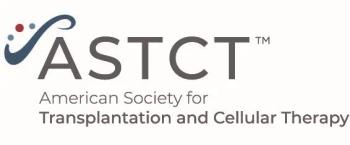
KIR Genes May Help Protect Against Myelodysplastic Syndrome
Researchers have discovered that people carrying activating killer-cell immunoglobulin-like receptor (KIR) genes, which are expressed in natural killer cells (NK cells), may experience a protective benefit.
Myelodysplastic syndrome (MDS), a disorder of the hematopoietic system that is a precursor of acute myeloid leukemia (AML), can occur for many reasons. But recently researchers have discovered that people carrying activating killer-cell immunoglobulin-like receptor (KIR) genes, which are expressed in natural killer cells (NK cells), may experience a protective benefit.
These results were presented (abstract 7001) at the 2015 American Society of Clinical Oncology (ASCO) Annual Meeting, held May 29-June 2, 2015 in Chicago, by May Daher, MD from The University of Texas MD Anderson Cancer Center. The study results can also be found in the May 2015 online issue of the Journal of Clinical Oncology.1, 2
This case-control study accrued 180 patients with a MDS diagnosis (120 with a high International Prognostic Scoring System [IPSS], 60 with low IPSS) and 117 healthy patient donors. The research team collected DNA samples in both cases and controls, and performed analysis of activating KIR genes using polymerase chain reaction (PCR).
Daher and colleagues demonstrated in their research that patients with high-risk MDS had lower numbers of activating KIR genes compared to patients with low-risk MDS (P = .009) and compared to healthy controls (P = .00001). Patients with low-risk MDS also had fewer activating KIR genes when compared to controls (P = .04). The data also showed that inheritance of each additional activating KIR gene had a protective effect against development of high-risk MDS (RR 0.7, P < .001).
These findings may offer important clues to the development of new immunotherapy options for patients with MDS or diseases that develop into full-blown blood malignancies.
Although MDS is not inherited, some genetic conditions may increase a person’s risk of developing MDS, including Fanconi anemia, Shwachman-Diamond syndrome, Diamond-Blackfan anemia, congenital neutropenia, and familial platelet disorder.3
Approximately 13,000 people in the United States (mostly over age 60) are diagnosed with this disease. MDS causes bleeding and infection from low blood cell counts or after the disease converts to AML, which can be deadly. About one-third of patients with MDS develop AML.3
References:
- Daher M, Sobieski C, Marin D, et al. (2015). Association between KIR genes and risk of MDS.
Abstract 7001 presented at the American Society of Clinical Oncology (ASCO) Annual Meeting. - Daher M, Sobieski C, Marin D, et al. (2015).
Association between KIR genes and risk of MDS. Journal of Clinical Oncology. - Cancer.Net. (2014).
Myelodysplastic Syndromes - MDS: Statistics .
Newsletter
Stay up to date on recent advances in the multidisciplinary approach to cancer.

















































































